BOEM develops, conducts and oversees world-class scientific research to inform its policy decisions. By using science, regulatory frameworks and input from others, the bureau considers the potential for BOEM activities to impact the ocean’s physical characteristics, biological resources and marine or coastal uses that are important to the environment and society.
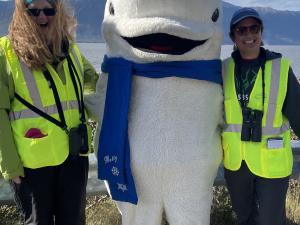
Thar she blows!
On Saturday, Sept. 13, a team from BOEM’s Alaska Outer Continental Shelf (OCS) Region joined NOAA Fisheries and other partners for Belugas Count!
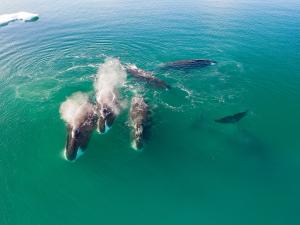
Charting A Course Toward Quieter Seas
As the push for offshore energy development intensifies across the Arctic, so do concerns about the impact of industrial noise on marine life and coastal communities. A newly released BOEM-supported report, Management of Marine Oil and Gas Associated Noise, outlines practical strategies to reduce the acoustic footprint of offshore operations in the circumpolar North.
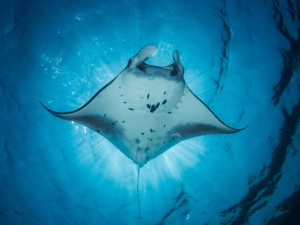
Manta Rays in Motion: Science-Driven Stewardship on the Seafloor
Giant oceanic manta rays (Mobula birostris) are large filter-feeding rays known for graceful swimming, enormous wingspan, and unique feeding mechanisms.
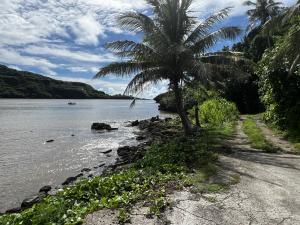
Beneath the Surface
As the U.S. eyes critical mineral resources offshore, BOEM collaborates with U.S. Pacific Island territory communities to guide responsible offshore development.

Back from the Brink: BOEM Sand Powers Coastal Comeback in Louisiana
The Bureau of Ocean Energy Management (BOEM) signed a Noncompetitive Negotiated Agreement (NNA) in July 2025 with the Louisiana Coastal Protection and Restoration Authority (CPRA) authorizing the use of Outer Continental Shelf (OCS) sand from two borrow sites off the coast of Louisiana to help restore the West Belle Headland.
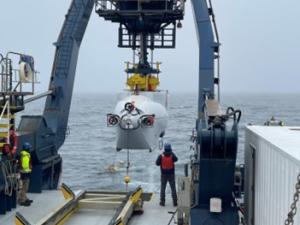
Into the Unknown
The ocean floor holds more than just mystery. It could hold the keys to America’s energy future. That’s why we are making big moves to better understand the hidden mineral resources of the U.S. Outer

Diving Deep Along the Aleutian Arc
If you’re curious about how this deep-sea journey began, check out the first story in our two-part series: Diving Deep Along the Aleutian Arc. Written by BOEM marine ecologist Dr. Christina Bonsell, it offers a personal look at the mission’s goals, science priorities, and community outreach efforts from the research vessel Atlantis.
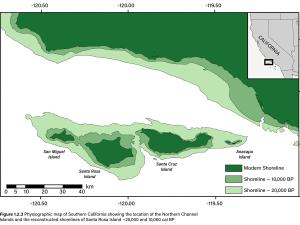
Unearthing the Past Beneath the Waves
BOEM is studying submerged paleolandscapes off the Pacific Coast to identify potential archaeological and ecological resources. This effort will guide responsible offshore energy development and protect sensitive cultural and biological areas.
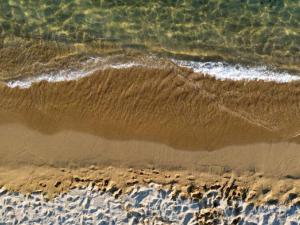
Stronger Shores Start Here
Sandy beaches are our first line of natural defense against the damage storm surges and chronic coastal erosion can cause to our coastal infrastructure. The Bureau of Ocean Energy Management (BOEM) manages the nation’s offshore sand resources to help rebuild and fortify the nation’s beaches, restore coastlines and defend critical infrastructure.
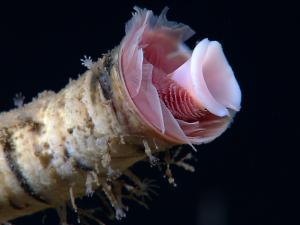
Tube Worms
Tube worms are fast-growing deep-water invertebrates that anchor themselves to underwater surfaces near hydrothermal vents and cold seeps. Lacking a mouth, stomach, intestines, and eyes, tube worms rely on a nutrient byproduct produced by the chemosynthetic bacteria that live in their bodies to survive.
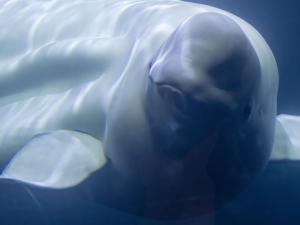
Belugas Count!
Organized by the National Oceanic and Atmospheric Administration’s National Marine Fisheries Service (NOAA-Fisheries), Belugas Count! 2024 brought the community together Saturday, Sept. 21, for a day of whale watching, learning, and conservation. At 22 designated viewing stations around Cook Inlet, the event offered participants the chance to help spot and count beluga whales while contributing to critical conservation efforts.
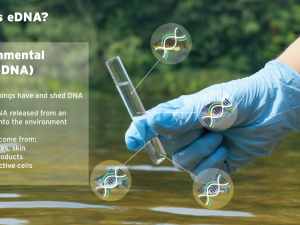
Environmental DNA (eDNA): A Powerful Tool for Exploring Marine Ecosystems
Environmental DNA (eDNA) analysis is a non-invasive and cost-effective method for monitoring marine biodiversity. Through water sample collection and analysis, scientists can identify species present in an ecosystem based on their genetic material. By integrating eDNA analysis with other technologies such as passive acoustics, satellite data, ship-based surveys , and aerial observations, researchers gain a more comprehensive understanding of marine ecosystems and the impacts of human activities on ocean health. BOEM supports utilizing eDNA to inform decision-making related to offshore wind development, monitoring, and oil spill response.
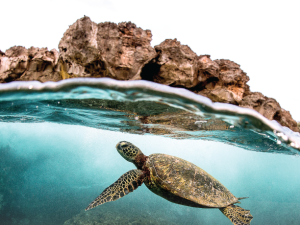
2023 Environmental Studies Year in Review Report Now Available
BOEM is pleased to announce that the 2023 Environmental Studies Program (ESP) Year in Review report is now available. The ESP Year in Review summarizes the environmental studies BOEM published from October 2022 through December 2023. It provides concise descriptions of each study’s purpose and findings, and how BOEM will use the research results. In addition to the study summaries, the Year in Review also provides insight into BOEM’s study process and the types of research BOEM conducts.
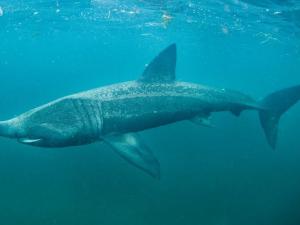
The Basking Shark
Basking sharks, the world's second-largest fish, are essential to marine ecosystems, regulating plankton populations through their filter-feeding habits. These sharks migrate significant distances in search of plankton, with some traveling nearly 6,000 miles. Despite their size, they are generally harmless to humans and face threats from boat strikes, slow growth to maturity, and habitat degradation, leading to their vulnerable conservation status.
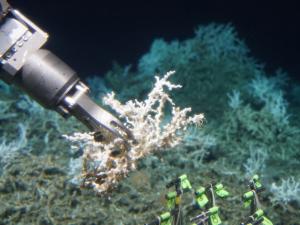
Exploring Atlantic Deep Sea Habitats with Deep SEARCH
Researchers recently concluded a large multi-agency, five-year study – titled Deep SEARCH – that was designed to shed light on little-known deep sea ecosystems located off the Eastern Seaboard. The study findings provide valuable baseline information for the Mid- and South-Atlantic, that can promote development of more accurate scientific models and inform BOEM’s future offshore energy development decisions, especially those that could affect sensitive habitats such as deep sea corals.
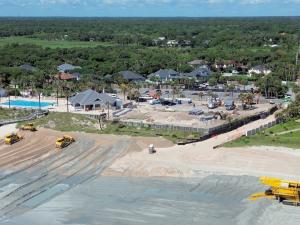
Restoring Florida’s Shoreline: BOEM’s Fight Against Coastal Erosion
The Bureau of Ocean Energy Management (BOEM) is playing a crucial role in preserving Florida's beaches through renourishment projects in Flagler and St. John’s Counties. These efforts have restored nearly 17 miles of coastline with up to 11 million cubic yards (mcy) of sand, enhancing resilience against natural disasters and severe weather. BOEM ensures stringent environmental conditions are met and collaborates with various Federal and state agencies to protect and enhance the coastal environment, supporting both local communities and the economy.
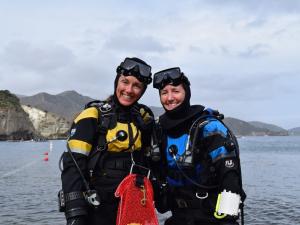
Unlocking Mysteries on the Seafloor
BOEM’s scientific divers cracked open a high-stakes criminal case in the aftermath of the Huntington Beach Oil Spill. Their underwater expertise not only helped the FBI build a timeline for the investigation but also earned them the prestigious FBI Director’s Certificate Award. Discover how their meticulous work brought justice to our oceans.
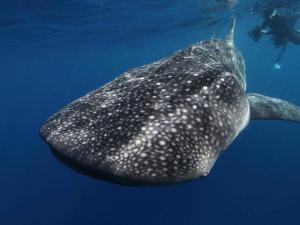
The Whale Shark: A Whale of a Fish
Distribution: Found in tropical and warm-temperate seas worldwide, typically seen in the tropics, such as the US territories, but can be found as far north as Massachusetts. They distributed globally
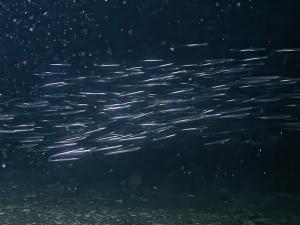
The Sand Lance
Distribution: Commonly found in the temperate and subarctic regions of the Northern Hemisphere. They are distributed across the North Atlantic and North Pacific Oceans, including the coasts of North
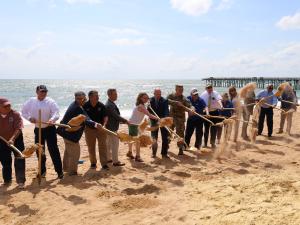
BOEM Helps to Restore Popular Florida Beaches
This project aims to protect and enhance a portion of Florida’s cherished but critically eroded beaches. Coastal resilience efforts, like these, strengthen the ability of individuals, communities, and infrastructure to "bounce back" after hazardous weather events.

